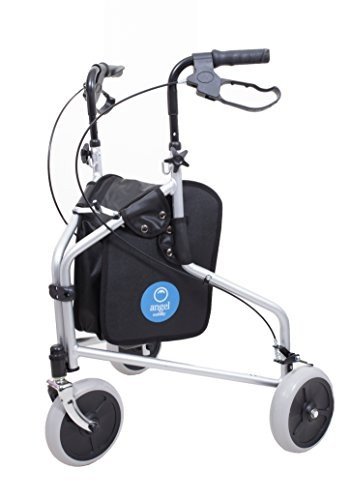Mobility Scooters: A Comprehensive Guide
Mobility scooters have become a necessary mode of transport for lots of individuals facing mobility difficulties. This article explores the different aspects of mobility scooters, including their types, benefits, features, and a guide for prospective buyers.
Comprehending Mobility Scooters
Mobility scooters are electrically powered devices designed for people with minimal mobility. They provide a way of transportation for people who may have problem strolling however still wish to maintain their independence. They can be found in different styles and features to accommodate a vast array of needs.
Types of Mobility Scooters
Mobility scooters can typically be classified into three primary types:
| Type | Description | Best For |
|---|---|---|
| Compact Scooters | These are small and lightweight, ideal for inside your home and short trips. | Users with minimal storage area or those who take a trip typically. |
| Mid-size Scooters | A balance in between mobility and stability, suitable for both indoor and outside usage. | Those who require to cover a variety of surfaces. |
| Durable Scooters | Large and robust, created for rugged outdoor use and much heavier people. | Users requiring extra weight capability or going off-road. |
Key Features of Mobility Scooters
The option of mobility scooter frequently depends on the functions that align with individual needs. Here are some of the essential functions to consider:
- Weight Capacity: Mobility scooters come with various weight limitations. It is vital to select a scooter that can adequately support the user's weight.
- Range: The range a scooter can travel on a single charge varies. Depending on user requirements, one may choose scooters with a variety of approximately 40 miles.
- Speed: Most mobility scooters can reach speeds between 4 to 8 mph. Consider what speed is comfortable and safe for the desired environment.
- Turning Radius: A compact turning radius is vital for indoor usage, permitting easier navigation in tight areas.
- Battery Type: The type of batteries used can impact the scooter's performance. Lead- mobility scooter dealers and lithium-ion batteries are the most typical.
Advantages of Using Mobility Scooters
The advantages of mobility scooters extend beyond simply transport. Some essential benefits consist of:
- Independence: Users can navigate their environment without relying on caregivers, promoting independence and confidence.
- Health Benefits: Using a scooter can encourage outside activity, resulting in physical and mental health improvements by reducing feelings of seclusion.
- Convenience: Scooters can quickly be run in different environments, whether indoors, in shopping center, or outdoors.
Crucial Considerations When Buying a Mobility Scooter
When purchasing a mobility scooter, a number of considerations can help make sure that you pick the ideal design:
Assess Individual Needs:
- Mobility level: Consider just how much support the individual will require.
- Series of usage: Determine where the scooter will mostly be used (inside your home, outdoors, on rough surfaces, and so on).
Test Drive:
- Always test drive several designs to discover a suitable fit. Take notice of convenience, ease of steering, and the scooter's responsiveness.
Evaluation Safety Features:
- Look for scooters with appropriate safety functions like lights, signs, and anti-tip styles.
Inspect Warranty and Service Options:
- A reliable guarantee and readily available service options are vital for long-term usage.
FAQs about Mobility Scooters
1. How fast do mobility scooters go?Mobility scooters generally have speeds ranging from 4 to 8 miles per hour, with the majority of designed for security instead of high-speed travel. 2. Exist weight limitations on mobility scooters?Yes, mobility
scooters come with particular weight limits, typically ranging from
250 lbs to over 500 pounds, depending upon the model. 3. Can mobility scooters be used indoors?Certain models, especially compact scooters, are specifically created for
indoor use and are much easier to navigate in tight areas. 4. How often do the batteries need to be replaced?Battery life can differ based upon use, however generally, with proper care, batteries may last in between 1 to 3 years before requiring replacement
. 5. Are mobility scooters covered by insurance?Coverage can differ, however some insurance coverage strategies, consisting of Medicare and Medicaid, might cover part of the expense. It's advised to contact individual insurance providers. Mobility scooters function as a
valuable tool for many people, allowing them to maintain
their liberty and independence. By understanding the various types and features of mobility scooters, people can make informed decisions tailored to their specific needs.
Whether utilized for errands, mingling, or leisurely activities, mobility scooters can boost the quality of life for those with mobility limitations. Investing in a mobility scooter is a choice that can considerably impact an individual's life. For that reason, individuals must carefully evaluate their alternatives and select a design that best lines up with their lifestyle and mobility requirements
.

